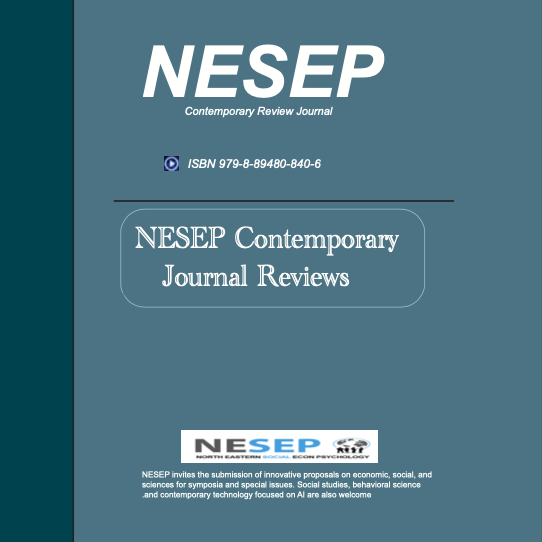Accepted Articles
We congratulate you on acceptance of your manuscript.

Annual Expo by the Journal of Young Explorers Meta and NESEP
- Fundamental or applied research
- Interdisciplinary research
- Judging on a rolling basis
- A work-in-progress research
- Completed research
- Unlimited topics and ideas
- ISBN 979-8-89480-840-6
- NESEP/NY-CSEF event at Harvard Club in NYC
A Eugenius Way of Anesthesia: The Effects of Different Clove Oil Anesthesia Administration Methods on Earthworm Physiology and Behaviorology
Abstract: Emergency shelters are essential for meeting basic needs and upholding the dignity of displaced populations following catastrophic events. Utilizing sustainable materials and efficient construction methods adapted to local contexts is also important in creating safe and dignified living environments.
Millions of people in Southeast Asia face displacement due to natural disasters and political conflicts. Two innovative approaches to refugee housing in Southeast Asia are the Hex House developed by Architects for Society and bamboo structures designed by Agora Architects. By examining the strengths and limitations of each approach, key considerations for future shelter development in the region become apparent. The Hex House, developed by Architects for Society, represents a groundbreaking solution by rapidly deploying dwellings with a focus on cost-effectiveness, sustainability, and resilience. Its modular design allows for easy on-site transportation and assembly, promoting self-reliance and community integration. In Indonesia, where natural disasters are frequent, the Hex House shelter emerges as a promising solution, meeting essential criteria for post-disaster housing and offering hope for recovery and rebuilding. Similarly, Agora Architects addresses the need for temporary housing solutions for refugees arriving from the Burmese border by designing timber and bamboo huts. These low-cost and easy-to-assemble residences provide immediate relief to refugees while aligning with sustainability goals through the use of recycled materials. Overall, Agora Architects can effectively apply innovative approaches to not only meet the urgent housing needs of refugees but also contribute to sustainable architectural practices and community resilience in the Southeast Asian region using local materials.
Keywords: Emergency shelters, sustainability, displaced populations, refugee relief, structural design, sustainable material
References
-
Adriani, J., & Zepernick, R. (1964). Clinical effectiveness of drugs used for topical anesthesia. JAMA, 188(8), 711-716.
-
Akei, H. S., Brandt, E. B., Mishra, A., Strait, R. T., Finkelman, F. D., Warrier, M. R., ... & Rothenberg, M. E. (2006). Epicutaneous aeroallergen exposure induces systemic TH2 immunity that predisposes to allergic nasal responses. Journal of Allergy and Clinical Immunology, 118(1), 62- 69.
-
Alemán Navas, R. M., & Martínez Mendoza, M. G. (2010). Case report: late complication of a dry socket treatment. International journal of dentistry, 2010.
-
Birse, S. C., & Bittner, G. D. (1981). Regeneration of earthworm giant axons following transection or ablation. Journal of neurophysiology, 45(4), 724-742.
-
Cooke, S. J., Suski, C. D., Ostrand, K. G., Tufts, B. L., & Wahl, D. H. (2004). Behavioral and physiological assessment of low concentrations of clove oil anaesthetic for handling and transporting largemouth bass (Micropterus salmoides). Aquaculture, 239(1-4), 509-529.
-
Jouppila, R., Teramo, K., Ulmsten, U., Purhonen, M., Hollmén, A., Berlin‐Wahlén, A., & Gustafsson, B. (1981). Maternal and foetal drug levels after epicutaneous application of a local anaesthetic formulation containing ketocaine for possible use as pain relief in labor. Acta Anaesthesiologica Scandinavica, 25(1), 73-75.
-
Koritsánszky, S., & Hartwig, H. (1974). The regeneration of the monoaminergic system in the cerebral ganglion of the earthworm, Allolobophora caliginosa. Cell and Tissue Research, 151(2). https://doi.org/10.1007/bf00222221
-
Lee, B. T., Shin, K. H., Kim, J. Y., & Kim, K. W. (2008). Progress in earthworm ecotoxicology. In Advanced environmental monitoring (pp. 248-258). Springer, Dordrecht.
-
Ohlsen, L., & Englesson, S. (1980). New anaesthetic formulation for epicutaneous application tested for cutting split skin grafts. British journal of anaesthesia, 52(4), 413-417.
-
Otani, I. M., Kuhlen Jr, J. L., Blumenthal, K. G., Guyer, A., & Banerji, A. (2015). A role for vancomycin epicutaneous skin testing in the evaluation of perioperative anaphylaxis. The journal of allergy and clinical immunology. In practice, 3(6), 984.
-
Park, C. K., Kim, K., Jung, S. J., Kim, M. J., Ahn, D. K., Hong, S. D., ... & Oh, S. B. (2009). Molecular mechanism for local anesthetic action of eugenol in the rat trigeminal system. PAIN®, 144(1-2), 84-94.
-
Podolak-Machowska, A., Kostecka, J., Librowski, T., & Plytycz, B. (2013). The use of selected anaesthetic drugs in search of a method for improving earthworms’ welfare. Journal of Ecological Engineering, 14(3).
-
Sadeghi, P., & Zacny, J. P. (1999). Anesthesia is a risk factor for drug and alcohol craving and relapse in ex-abusers. Medical hypotheses, 53(6), 490-496.
-
Scanlon, G. C., Moeller-Bertram, T., Romanowsky, S. M., & Wallace, M. S. (2007). Cervical transforaminal epidural steroid injections: more dangerous than we think?. Spine, 32(11), 1249-1256.
-
Scheu, S. (1991). Mucus excretion and carbon turnover of endogeic earthworms. Biology and Fertility of Soils, 12(3), 217-220.
-
Shende, P. K., Gaud, R. S., Bakal, R., & Yeole, Y. (2016). Clove oil emulsified buccal patch of serratiopeptidase for controlled release in toothache. Journal of Bioequivalence & Bioavailability, 8, 134-139.
-
Sullivan, D., & Seladi-Schulman, J. (2019, September 9). What You Need to Know About Clove Essential Oil. Healthline. https://www.healthline.com/health/clove-essential-oil#benefits
-
Yeo, D. C., Balmayor, E. R., Schantz, J. T., & Xu, C. (2017). Microneedle physical contact as a therapeutic for abnormal scars. European journal of medical research, 22(1), 1-9.